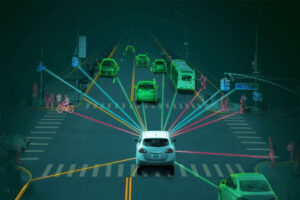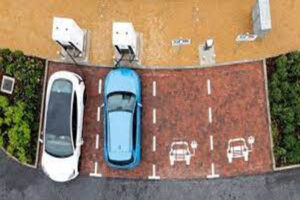Global regulators are imposing stricter emissions targets. The Biden administration (US) established a 50% electric vehicle (EV) objective for 2030, while the European Union revealed its “Fit for 55” program, which intends to harmonize energy, transportation, land use, and taxation policies in order to limit the greenhouse gas emissions by at least 55% by 2030. The majority of countries also offer EV subsidies in addition to these regulations.
The market size for autonomous vehicles and emobility controls is anticipated to increase at a compound annual growth rate (CAGR) of 21.4% between 2022 and 2030, according to Market Statsville Group (MSG).
Cities are attempting to lessen traffic and the usage of private vehicles by encouraging the use of bicycles and other alternative forms of transportation. Paris has declared plans to invest $300 million in modernizing its bike network and turning 50 kilometers of roadway into bike lanes. Additionally, a lot of localities are enacting laws governing automobile access. In fact, more than 150 European towns have already created low-emission and pollution emergency access legislation.
Adaptive algorithms, sensor processing, high-definition mapping, and enhanced infrastructure are among the technological innovations driving a number of firms to increase their production of autonomous cars. The technology and equipment that make up the infrastructure for autonomous cars are widely available on the market.
People without drivers’ licenses and those with specific impairments can move freely thanks to autonomous cars. It makes it possible for passengers to journey with more comfort and flexibility. They may work, read, or even relax while in route, which boosts productivity and gives them a sense of sustainability. Additionally, it will reduce the expense of hiring professional drivers for cabs and commercial vehicles. The market acceptance of these cars will be fueled by additional benefits including enhanced safety with fewer collision risks and higher road capacity with cheaper prices.
COVID-19 Impact on the Global Emobility Controls and Autonomous Vehicles Market
Market uncertainty is being caused by the COVID-19 situation, which is slowing down logistical services, preventing businesses from growing, and raising anxiety among specific client segments. Border restrictions caused by governments declaring complete lockdowns and interim industry shutdowns hindered the flow of logistics and transportation services. The COVID-19 health crisis has caused a significant shift in the outlook for global industry. In addition, the total service activities of market players have declined, leading to a notable decline in the need for cash usage in order to mitigate the danger of contamination.
Additionally, COVID-19 is altering customer perceptions of public transportation, which might eventually be advantageous for AV technology. Due to local regulations or personal preference, most customers remained indoors throughout the global epidemic. Except for the necessary employees, transportation usage has drastically decreased as a result. Real-time implementation of sustainable self-driving systems is imperative for logistic organizations, since COVID-19 sheds light on the human aspect of goods delivery.
The human factor of goods transportation has been brought to light as a weak link in the country’s supply chain for products, even if cost reductions and non-stop transit of goods are significant considerations. This is because COVID-19 has the potential to halt the shipping of goods. Unlike humans, autonomous vehicles (AVs) are not subject to 14-day quarantines or driver shortages caused by illness.
Instead, they may operate around the clock, every day of the week. The capacity to move items through the supply chain effectively and reliably is more crucial than ever in emergency situations, particularly when there are supply shortages and panic purchasing. Presently, the globe is gradually returning to its previous course with new regulations and guidelines in place, along with a noticeable upturn in product sales in the retail industry.
Global Emobility Controls and Autonomous Vehicles Market Dynamics
Drivers: Environmental impact owing to the traditional vehicles
Since their inception, automobiles have contributed to the deterioration of the environment in the form of carbon dioxide. Carbon dioxide emissions into the atmosphere contribute to global-mean surface warming, and road traffic accounts for approximately 20% of total CO2 emissions.
Cities now house more than half of the world’s population. By 2050, an additional 2.5 billion people will live in cities, increasing energy demand and the need for people and goods transportation. Cities and suburbs will become more noisy, congested, and prone to smog as a result. This is especially true in densely populated metropolitan areas in developing countries like Beijing, Delhi, and Mexico City. They are all affected by traffic congestion and poor air quality.
However, the internal combustion engine and electric vehicle technology are constantly evolving, with year-to-year changes in fuel economy and emissions. With the growing consumer awareness towards sustainability, the demand for emobility controls and the autonomous vehicle market boosts.
Restraints: Non-availability of infrastructure in developing countries
Over the forecast years, the lack of standardized charging infrastructure will stymie the growth of the emobility control and autonomous vehicle market. Gas stations can be found every few miles in urban and suburban areas, whereas public infrastructure for electric vehicles is concentrated in major metropolitan areas.
Plug-in hybrid vehicles have a shorter range than gasoline vehicles and necessitate a dense charging infrastructure that can assist in both long and short-distance travel. However, a lack of space and affordable renewable energy puts a strain on the coal-powered electricity grid.
Opportunities: Government initiatives for sustainable and autonomous mobility
Cities focus on making their environments more liveable by implementing the visions and goals outlined in their Sustainable Urban Mobility Plans (SUMPs).
In order to coordinate the proactive efforts of various operators and authorities around the world, the International Association of Public Transport (UITP) initiated the SPACE project (Shared Personalised Automated Connected Vehicles) in 2018 – a global initiative to help place public transportation at the center of the AV revolution and build a combined transport ecosystem.
Moreover, National Electric Mobility Mission Plan 2020 is among the most important initiatives implemented by the Government of India, with the potential to usher in a paradigm shift in the country’s automotive and transportation industries.
This is the culmination of comprehensive, collaborative planning for the promotion of electric and hybrid mobility in India through a combination of policies aimed at gradually ensuring a vehicle population of approximately 6-7 million electric/hybrid vehicles in India by the year 2020, as well as a certain level of technology indigenization ensuring India’s global leadership in some vehicle segments.
Scope of the Global Emobility Controls and Autonomous Vehicles Market
The study categorizes the emobility controls and autonomous vehicles market based on the level of automation, propulsion type, battery, and application area at the regional and global levels.
By Level of Automation Outlook (Sales, USD Billion, 2017-2030)
- Level 1
- Level 2
- Level 3
- Level 4
- Level 5
By Propulsion Type Outlook (Sales, USD Billion, 2017-2030)
- Semi-autonomous
- Full-autonomous
By Battery Outlook (Sales, USD Billion, 2017-2030)
- Sealed Lead Acid
- NIMH
- Li-ion
By Application Outlook (Sales, USD Billion, 2017-2030)
- Transportation
- Industrial
- Commercial
- Defense
Transportation segment accounts for the largest market share during the forecast period by application
Based on the application, the market is bifurcated into transportation and defense. The transportation segment accounted for a larger revenue share in 2021. The growing global population, rapid urbanization, and surging e-commerce activities have greatly enhanced transportation. Electric mobility is widely regarded today as a means of improving air quality and meeting climate goals, but it is rarely included in a comprehensive vision for smarter cities. Furthermore, the improved technology provided by various companies entices customers to adopt autonomous vehicles for personal and commercial use.
Based on the regions, the global emobility controls and autonomous vehicles market has been segmented across North America, Asia-Pacific, Europe, South America, and the Middle East & Africa. North America is expected to witness the highest market share in 2021. The growth of mobility as a service sector is expected to fuel the autonomous car market.
North America is expected to grow significantly as a result of changes in traffic regulations in the United States to allow autonomous vehicles on public roads. To make fully autonomous transportation, the regulation is gradually being adopted across all states in the United States. In Arizona, Texas, Washington, California, Michigan, and other states, self-driving cars have already been in trend, tested and used. Nonetheless, they are limited to specific test areas and driving conditions.
Moreover, Europe is projected to grow significantly during the forecast period due to government initiatives for a clean environment and support for the development of autonomous vehicles in the region. In the United Kingdom, for instance, the Department of Transport (DFT) launched the Automated Lane-Keeping System (ALKS) in August 2020, which can automatically take control of vehicles traveling at low speeds. The driver will be allowed to represent driving to the vehicles, and the autonomous system will keep the vehicle moving in its lane. The government of the United Kingdom intends for self-driving vehicles to be in use in the country by 2021, and it also intends to make the necessary changes to regulations to encourage the development of autonomous vehicles in the European region.
Key Market Players in the Global Emobility Controls and Autonomous Vehicles Market
The emobility controls and autonomous vehicles market is extremely cutthroat, and significant competitors in the sector are using tactics including product development, collaborations, acquisitions, agreements, and growth to bolster their market positions. Most sector businesses focus on growing their operations worldwide and cultivating long-lasting partnerships.
Major key players in the global emobility controls and autonomous vehicles market are:
- Audi AG
- Altair
- BMW AG
- Daimler AG
- Ford Motor Company
- General Motors Company
- Google LLC
- Honda Motor Co., Ltd.
- Nissan Motor Company
- Roush
- Tesla
- Toyota Motor Corporation
- Uber Technologies, Inc.
- Volvo Car Corporation
- Volkswagen AG



